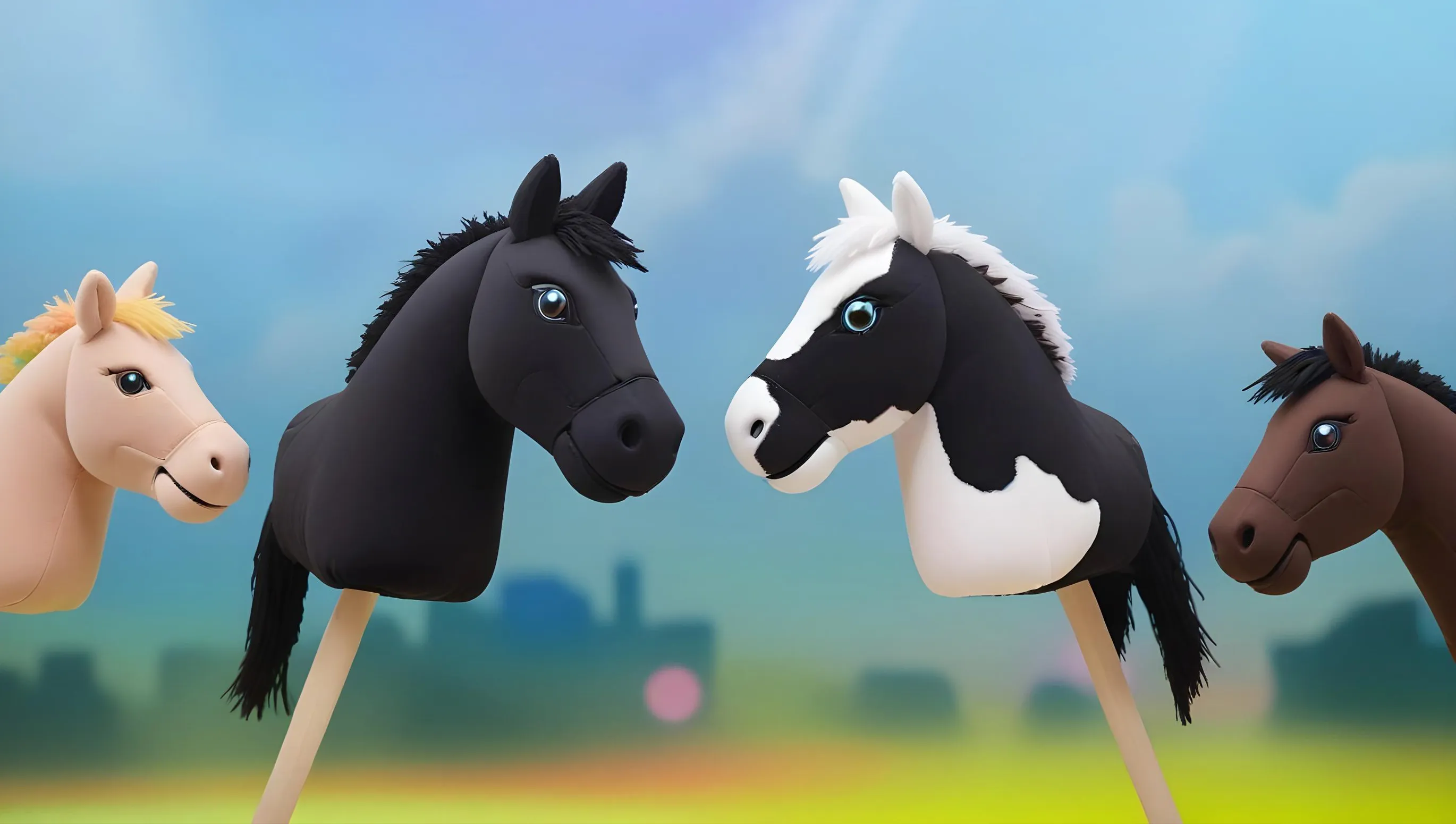Hobbyhorsing is a fascinating sport and leisure activity that has gained popularity in recent years. Participants use a hobbyhorse to imitate equestrian disciplines. What may seem strange at first glance brings much joy to the growing fan base.
Hobbyhorsing is mainly practiced by children and teenagers, which is particularly valuable in today's world. Statistics show that year by year, fewer children show interest in sports and physical activity. In this context, hobbyhorsing acts as a bridge that helps the young generation to adopt an active lifestyle through a playful and creative form.
The core of hobbyhorsing lies in the fact that the athlete, holding the hobbyhorse between their legs, overcomes obstacles and performs maneuvers similar to those in traditional equestrian sports. Hobbyhorsing is accessible to almost everyone, regardless of age, physical fitness, or financial means.
This sport stands out for its uniqueness and the opportunity for self-expression. Participants compete in skill and technique and also show creativity in designing and decorating their hobbyhorses. Many enthusiasts make their "horses" themselves. Hobbyhorsing promotes physical activity, coordination, and socialization through participation in competitions and interaction with like-minded individuals. It is often the first step towards real equestrianism and helps in learning basic principles and terminology. With the increasing popularity of hobbyhorsing, interest from media, sports organizations, and the public is also growing.
Table of Contents
History of Hobbyhorsing
In the early 2000s, Finnish teenagers, especially girls, began to hold informal competitions where they imitated various equestrian disciplines with homemade hobbyhorses. Over time, these gatherings evolved into organized events. By 2010, regular hobbyhorsing tournaments were already taking place in Finland.
A key moment in the development of hobbyhorsing was in 2012 when the first official national championship took place in Finland. This event attracted media attention and contributed to further popularizing the sport. From that point on, the number of participants began to rapidly increase.
In 2017, the documentary "Hobbyhorse Revolution" by Finnish director Selma Vilhunen was released, introducing this phenomenon to a wide audience. The film not only highlighted the sporty side of hobbyhorsing but also addressed social aspects and showed how this hobby helps teenagers deal with life challenges.
The film not only introduced a broad audience to hobbyhorsing but also addressed important social issues related to adolescence, self-expression, and self-acceptance.
With the growing popularity of hobbyhorsing in Finland, interest in it began to spread to other countries. Initially, it was the neighboring Scandinavian countries, then other European states. By 2020, hobbyhorsing already had followers in the USA, Canada, Russia, and several Asian countries.
The development of the internet and social media played a significant role in spreading hobbyhorsing. Enthusiasts began to create online communities, share videos of their performances, and exchange experiences, contributing to the formation of a global hobbyhorsing community.
Today, hobbyhorsing continues to evolve. It is increasingly taking on organized forms, national associations are emerging, and standardized competition rules are being developed. The sport retains its unique character, combining elements of play, sport, and creative expression.
Rules and Disciplines
Hobbyhorsing's disciplines are inspired by traditional equestrian sports but adapted to the sport's particularities. The main disciplines include:
- Show Jumping: Participants must guide their hobbyhorse through a course with various obstacles. The obstacles vary in height and complexity, depending on the competition level.
- Dressage: Here, participants perform a series of prescribed movements and figures that require grace, precision, and control.
- Combined Eventing: This discipline combines elements of show jumping with natural obstacles, simulating a cross-country ride.
The basic rules of hobbyhorsing are relatively simple:
- Participants must always hold the hobbyhorse between their legs and must not let go of it.
- Movements should realistically mimic those of a real rider as much as possible.
- When jumping, both feet of the participant must leave the ground.
- In dressage, posture, execution of the figures, and artistic expression are evaluated.
Competitions are often divided into different age groups and performance levels to ensure fair conditions for all participants. Evaluation is done by judges who consider criteria such as technique, style, speed, and in dressage, also artistic expression.
In addition to the official competitions, there are also freestyle categories where participants can unleash their creativity fully. Here, elements from dance, acrobatics, and even costume design are often combined with hobbyhorsing.
The equipment in hobbyhorsing is relatively simple. The most important element is, of course, the hobbyhorse itself, which is often lovingly made and individually designed. Many participants also wear riding apparel to enhance authenticity.
With the increasing professionalization of the sport, the rules and evaluation criteria are constantly being developed and refined to meet growing demands and ensure fairness in competition.
The Social Role of Hobbyhorsing
Hobbyhorsing can help in the social development of young people. This sport helps overcome social anxieties, develops communication skills, and fosters creative potential. Participants often make and design their hobbyhorses themselves, allowing them to express their individuality.
The hobbyhorsing community is known for its high level of support and acceptance. Diversity is welcomed here, creating a safe space for self-expression. Parents and educators notice the positive impact of hobbyhorsing on the physical and psychological development of children. (Utopia)
This sport requires significant physical activity, including jumping, gymnastic exercises, and running, contributing to the development of motor coordination and endurance. Furthermore, participating in hobbyhorsing helps form and strengthen social bonds, positively impacting emotional well-being and the development of social skills.
Hobbyhorsing is increasingly becoming a recognized tool for the socialization and development of young people, offering a fascinating alternative to traditional sports and leisure activities.
The Future of Hobbyhorsing
The future of hobbyhorsing looks promising. With the increasing popularity of this sport, it is expected to further develop and spread worldwide. We may see an increase in international competitions and possibly even the inclusion of hobbyhorsing in major sports events programs. Technological innovations could lead to the development of "smart" hobbyhorses equipped with sensors for precise measurement of jumping height and movement speed, making the evaluation more objective.
Furthermore, hobbyhorsing has the potential to become a significant tool in education and therapy. It could be used in schools to increase students' physical activity and develop their social skills. In therapeutic applications, hobbyhorsing could help people with disabilities improve their coordination and self-confidence. It is also possible that new hybrid forms will emerge, combining elements of hobbyhorsing with other sports or arts, opening new horizons for creativity and self-expression.
Given the history of hobbyhorsing, its young age, and its growing popularity, it would not surprise me if in 10 years there were discussions about whether hobbyhorsing should be included in the list of Olympic sports. As a father of two children, I am pleased to see another sport encouraging children to spend more time outdoors and less time with gadgets. I wish all hobbyhorsers good luck and lots of fun.

